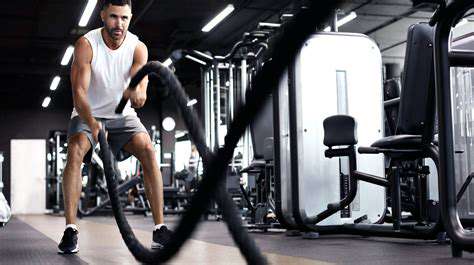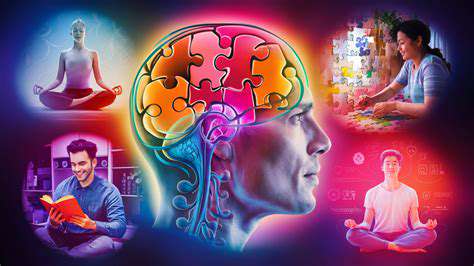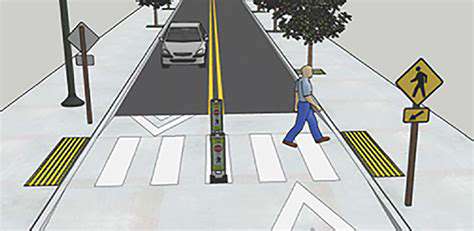The Importance of Regular Balance Training for Seniors
Practical Exercises to Enhance Balance
Improving Stability Through Single-Leg Exercises
Single-leg exercises, such as standing on one leg while brushing your teeth or performing a single-leg squat, are crucial for improving balance. These exercises challenge your proprioceptive system, the body's awareness of its position in space. By forcing your body to maintain equilibrium on a reduced base of support, single-leg exercises build strength and coordination in the muscles responsible for balance, including those in your core, legs, and hips. Consistent practice of these exercises can significantly enhance your ability to maintain stability during daily activities and reduce the risk of falls.
Variations of single-leg exercises, like the single-leg deadlift or the single-leg Romanian deadlift, can be progressively challenging. Start with simpler variations and gradually increase the difficulty as your balance improves. Remember to maintain a controlled and deliberate movement throughout each repetition, focusing on maintaining your center of gravity and engaging your core muscles for stability.
Utilizing Balance Platforms for Enhanced Proprioception
Balance platforms, often featuring varying levels of instability, provide a dynamic way to challenge your balance. These platforms force your body to constantly adjust its position, strengthening the neural pathways responsible for maintaining equilibrium. By incorporating balance platforms into your routine, you can enhance your proprioception and reactive balance, which are essential for managing unexpected movements and maintaining stability during everyday activities.
Different types of balance platforms offer various levels of challenge. Start with a stable platform and gradually progress to more unstable options as your balance improves. Remember to maintain good posture and focus on maintaining a stable core throughout the exercises.
Incorporating Yoga and Tai Chi for Holistic Balance
Yoga and Tai Chi are excellent practices that integrate physical postures and mindful movement to improve balance and overall body awareness. The slow, controlled movements of Tai Chi, combined with the emphasis on breath control and body awareness, strengthen the muscles needed for balance and promote body awareness. Yoga poses, such as tree pose or warrior pose, actively engage the muscles responsible for balance and stability, improving both static and dynamic balance.
The Role of Vision in Balance Maintenance
Vision plays a critical role in maintaining balance. Our eyes provide crucial information about our body's position in relation to the environment. Exercises that incorporate visual challenges, such as closing your eyes while standing or walking, can help train your body to rely on other sensory inputs, like proprioception and vestibular function, to maintain balance.
Utilizing Visual Cues for Improved Balance
Utilizing visual cues, such as placing a fixed point of focus during balance exercises, can help improve your stability. By maintaining a consistent gaze on a target point, you can enhance your body's ability to maintain equilibrium. Visual cues can also be used to gradually increase the difficulty of a balance exercise by making the target point more distant or changing its position.
Regular Practice for Long-Term Balance Improvement
Consistency is key to improving balance. Regular practice of balance exercises, even for short durations, is more effective than sporadic intense sessions. Aim for incorporating balance exercises into your daily routine, whether it's through a dedicated workout or by incorporating balance-enhancing activities into your daily tasks. This regularity will progressively strengthen the neural pathways, muscles, and sensory systems that contribute to balance, leading to long-term improvements in stability and reducing the risk of falls.
Building a Supportive Environment
Creating a Safe Space for Practice
Building a supportive environment for balance training isn't just about having a comfortable space; it's about fostering a mindset of acceptance and encouragement. This means creating an atmosphere where individuals feel comfortable trying new things, even if they stumble or experience moments of instability. Open communication is key. Encourage participants to share their feelings and experiences, both positive and negative, without fear of judgment. A safe space allows for the exploration of limits and the gradual progression towards improved balance, without the pressure of immediate perfection.
Clear communication about expectations and potential challenges is essential. Explain that falls are a natural part of the learning process, and provide strategies for managing them safely, such as having a spotter present or using supportive equipment like a balance board or stability cushion. This environment of mutual support and understanding is critical for building confidence and promoting long-term adherence to a balance training program.
Understanding the Importance of Patience and Persistence
Balance training, like many other aspects of physical improvement, requires patience and persistence. It's not a quick fix, and there will be days when progress feels slow or even non-existent. Acknowledging this reality and reinforcing the importance of consistent effort is crucial for maintaining motivation. Celebrate small victories, acknowledging the effort put in, regardless of the outcome. This approach fosters a positive mindset and reinforces the value of the training.
Focusing on the process of improvement, rather than the outcome, is vital. Encourage participants to focus on their personal progress, emphasizing the positive effects on their overall well-being and quality of life. This approach promotes a long-term commitment to balance training, rather than a fleeting interest.
Incorporating Visual Cues and Sensory Stimulation
Creating a supportive environment for balance training can also involve incorporating visual cues and sensory stimulation. For example, using visual markers or lines on the floor to guide movement can aid in spatial awareness and balance. Adjusting lighting or incorporating sound elements can also impact the individual's perception of their surroundings, potentially improving their balance and coordination.
Using different surfaces, like a balance board or an unstable surface like a foam pad, can provide varying levels of sensory input, challenging the individual's proprioception (body awareness) and encouraging adaptation. Careful consideration of these elements can greatly enhance the effectiveness of balance training sessions.
Utilizing Technology and Adaptive Equipment
Technology can play a significant role in creating a supportive environment for balance training. Apps and devices can provide personalized feedback, track progress, and offer tailored exercises to address individual needs. Utilizing technology can also make the training more engaging and motivating, potentially boosting adherence rates. It's crucial to ensure that the technology used is accessible and easy to understand for all participants.
Adaptive equipment, such as stability cushions, balance boards, or weighted vests, can provide targeted support and adjustment for individuals with specific needs or limitations. These tools can modify the difficulty of exercises, allowing for progressive challenges and accommodating diverse abilities. By integrating adaptive equipment, balance training becomes more inclusive and accessible to a wider range of people.
Tailoring the Program to Individual Needs
A truly supportive environment for balance training recognizes and accommodates individual differences. This means tailoring the program to address specific needs, limitations, and goals. For instance, individuals with specific medical conditions or physical limitations may require modified exercises or adjustments in intensity and duration. Providing individualized attention is paramount for optimal results.
Regular assessments and progress monitoring are crucial to ensure that the training remains effective and safe. Adjusting the program based on feedback and observations allows the training to adapt to the individual's evolving needs and abilities. It is important to maintain open communication with participants to understand their progress and address any challenges they may encounter.
Encouraging Active Participation and Motivation
A supportive environment fosters active participation and sustained motivation. This involves incorporating varied activities and exercises to keep the training engaging and exciting. This could include incorporating music, games, or visual aids to make the sessions more enjoyable. Encouraging social interaction among participants can also boost morale and create a sense of community.
Positive reinforcement and encouragement are essential for maintaining motivation. Celebrate milestones and acknowledge effort, fostering a positive and encouraging environment where participants feel valued and supported in their journey towards improved balance. This approach not only enhances the effectiveness of the training but also cultivates a lasting commitment to personal well-being.











